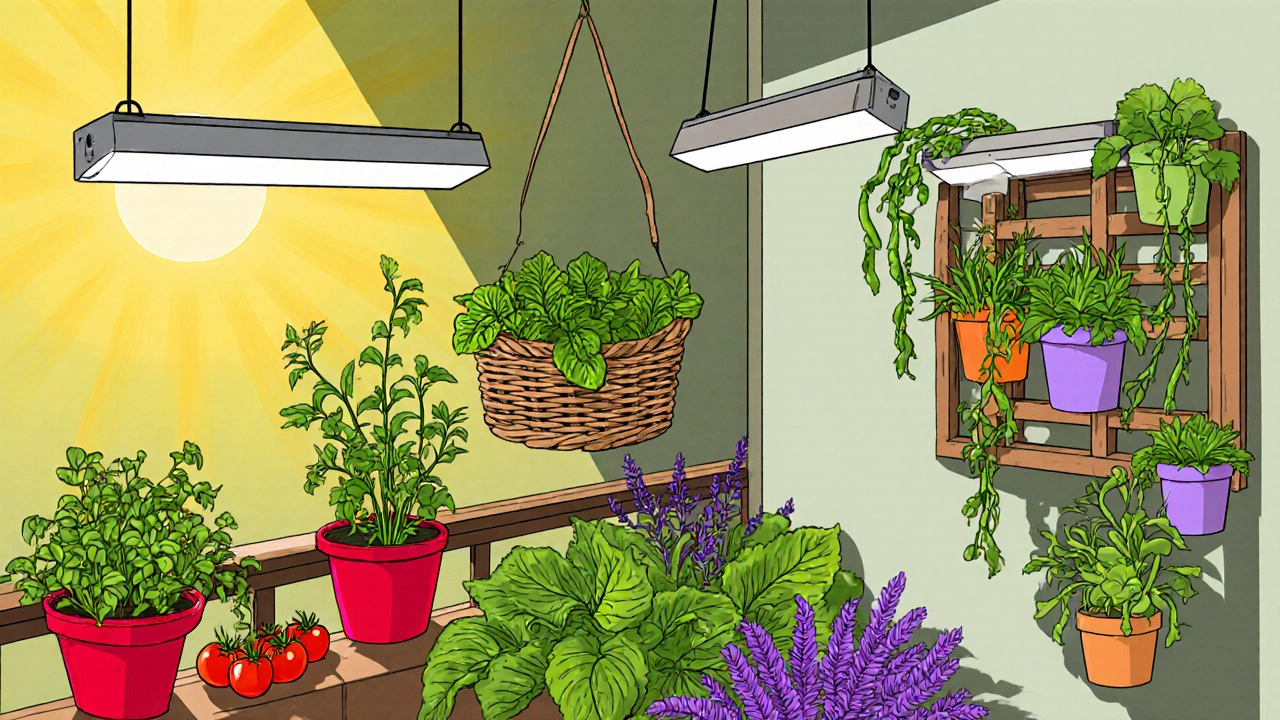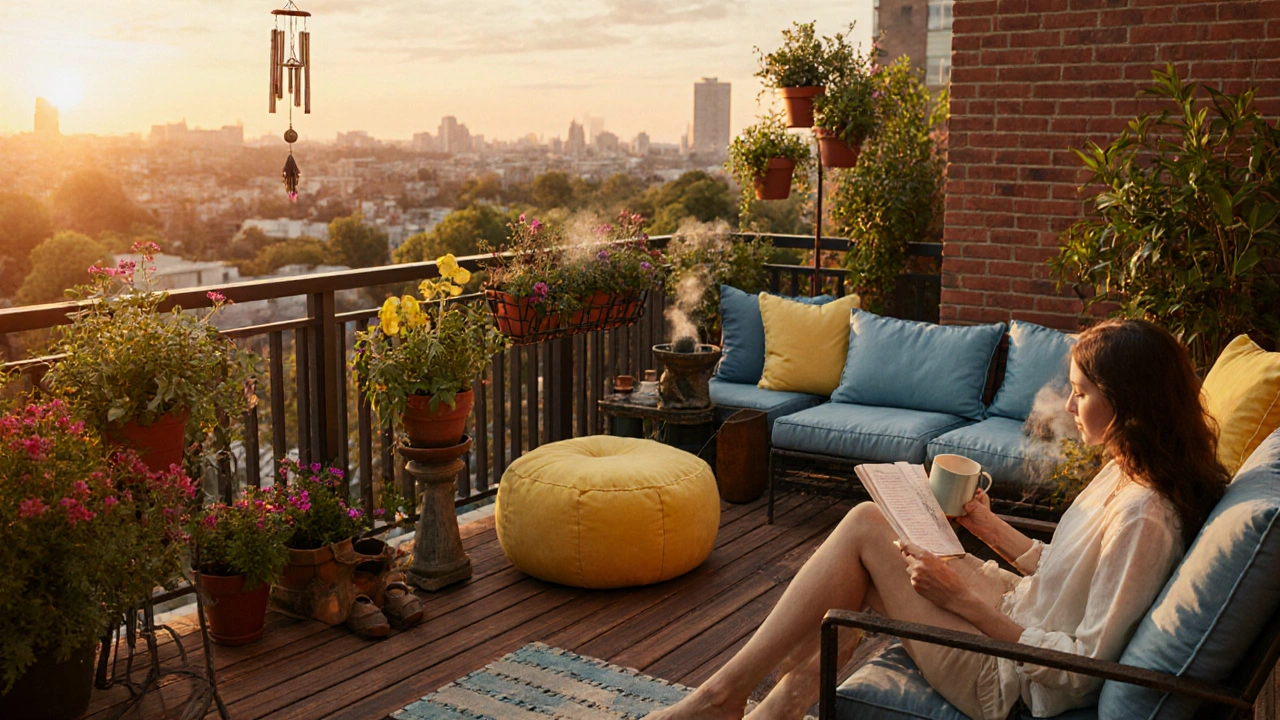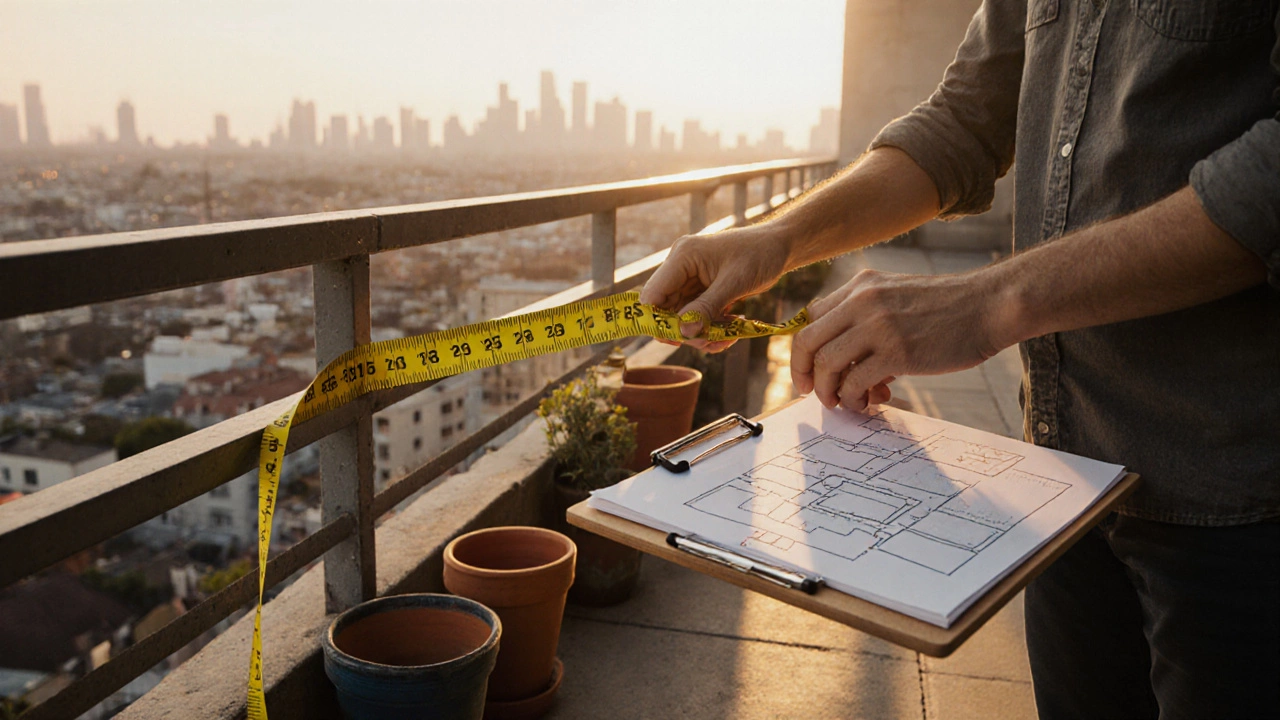Balcony Planter Weight Calculator
Safety Calculator
Safety Guidelines
- Never exceed 15 kg per hanging planter
- Distribute weight evenly across all railing sections
- Check your railing's specific load rating
- Use sturdy mounting hardware
When you turn a plain balcony into a thriving Balcony garden a small outdoor space filled with plants, décor and functional elements that brighten your home, the result is more than just aesthetics-it lifts your mood, gives you fresh air, and even adds a tiny food source.
Start with a Plan: Measure, Map, Mood
The first step isn’t buying pots; it’s figuring out what you have. Grab a tape measure, note the length, width and any protruding railings. Sketch a quick layout on a scrap of paper. Think about the vibe you want: a Zen retreat, a colourful flower burst, or a herb‑harvest hub. Once you know the dimensions, you can decide how many containers fit without crowding the space.
Pick the Right Container plants for Size and Light
Balconies get a mix of sun, shade, and wind. Choose plants that match those conditions. For sunny spots, try dwarf tomatoes, chilies, or lavender. In shadier corners, opt for ferns, ivy, or lettuce. Succulents and herbaceous perennials like thyme and oregano thrive in containers and need little pruning.
- Sun lovers: dwarf roses, geraniums, chilies
- Partial shade: ferns, hostas, lettuce
- Full shade: ferns, ivy, mosses
Mixing textures-leafy greens, fuzzy herbs, bright flowers-creates visual interest all year round.
Smart Containers: Materials, Drainage, and Style
Not all pots are created equal. Here’s a quick comparison that helps you pick the best fit for your climate and budget.
| Material | Weight | Drainage | Durability |
|---|---|---|---|
| Terracotta | Heavy | Excellent | Medium (cracks in freeze) |
| Plastic | Light | Good (add holes) | High |
| Fiberglass | Medium | Very good | Very high |
| Self‑watering | Medium | Built‑in reservoir | High |
For a Manchester balcony that can get chilly, terracotta or fiberglass works well, but add a insulating wrap on winter nights. Self‑watering pots are a lifesaver when you forget to water during a busy week.
Go Vertical with Vertical planters and Trellis
Floor space is precious, so think upward. Hanging baskets, pocket organisers, and wall‑mounted planters free up room for seating. A simple wooden trellis lets beans, peas, and even some ornamental vines climb, creating a lush backdrop.
- Attach a sturdy trellis to the balcony railing using zip ties.
- Plant climbing beans in a deep container at the base.
- Train the vines daily to keep them neat.
Vertical gardens also improve air flow, reducing mildew risk on lower pots.

Light It Right: LED grow lights for Low‑Sun Days
Manchester weather can be overcast, especially in autumn. A set of low‑energy LED grow lights hung from the railing gives plants a consistent light boost. Look for full‑spectrum bulbs rated for 3000‑5000 lux; a 12‑hour timer mimics natural daylight.
Just mount the lights at a 45‑degree angle to avoid scorching delicate leaves.
Flooring and Seating: Comfort Meets Durability
A stylish floor makes your balcony feel like an outdoor living room. Weather‑resistant decking made from composite wood resists rot and is easy to clean. Lay interlocking tiles for a quick DIY job.
Add a compact folding chair or a weather‑proof pouf. Cushions should be covered in outdoor‑grade fabric-think Sunbrella-to resist mildew.
Styling Details: Color, Texture, and Personal Touches
Finish the look with a few decorative accents. Choose a colour palette (soft blues, citrus yellows, or deep greens) and repeat it across pots, cushions, and rail accessories. Small statues, wind chimes, or a mini water feature add personality.
Don’t forget functional décor: a narrow rail‑mounted shoe rack or a tiny herb‑drying rack keeps the space tidy and useful.

Maintenance Checklist: Keep It Fresh All Year
- Inspect drainage holes weekly; clear debris.
- Rotate pots every two weeks for even sunlight exposure.
- Feed with a balanced liquid fertilizer once a month during the growing season.
- Prune dead foliage to prevent disease.
- Cover delicate plants or move them indoors during frost warnings.
Follow these steps and your balcony will stay vibrant from spring blooms to autumn harvest.
Quick Takeaways
- Measure and sketch before buying anything.
- Match plants to the light and wind conditions.
- Choose containers with good drainage; consider self‑watering for convenience.
- Use vertical planters and a trellis to free up floor space.
- Add LED grow lights on cloudy days.
- Invest in weather‑resistant decking and outdoor‑grade cushions.
- Follow a simple maintenance routine for year‑round beauty.
Frequently Asked Questions
How much weight can a typical balcony railing hold for hanging planters?
Most residential railings are rated for 100‑150 kg (220‑330 lb). For safety, keep hanging planters under 15 kg each and distribute weight evenly across the railing.
Can I grow fruit trees on a balcony?
Dwarf varieties like Meyer lemon or columnar apple trees work in large containers (minimum 50 L). They need deep pots, regular feeding, and winter protection.
What’s the best way to protect plants from frost?
Wrap pots in horticultural fleece, move delicate herbs indoors, and use a small electric heater set on low for extreme nights.
Do I really need LED grow lights if I have a sunny balcony?
If your balcony gets at least 4‑5 hours of direct sun, lights aren’t essential. However, clouds and shorter winter days can still benefit from a brief 2‑hour boost.
How often should I repot my balcony plants?
Usually every 12‑18 months, or when you see roots circling the pot bottom. Refresh the soil mix each time to maintain drainage.
With a clear plan, the right plants, and a few smart accessories, you can turn any drab balcony into a vibrant oasis that you’ll love using every day. Balcony garden design doesn’t have to be expensive-just thoughtful.

